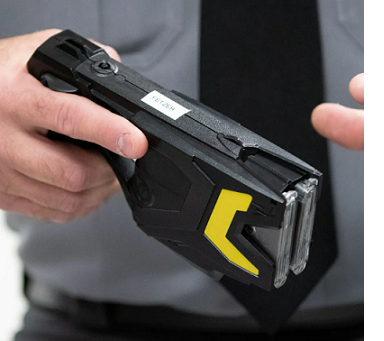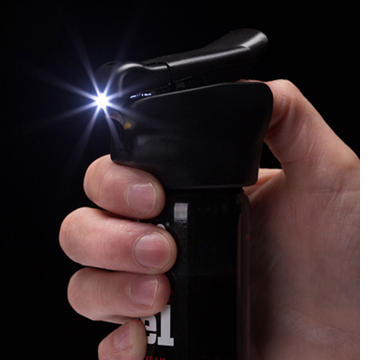The Legality of TASERs and Their Impact on Combating Criminal Activity
 In recent years, TASERs have gained significant attention as a non-lethal alternative for law enforcement and personal protection. These electroshock weapons, designed to incapacitate individuals temporarily, have sparked debates regarding their legality, effectiveness, and potential impact on reducing criminal activity in the United States. This blog post will delve into the legal framework surrounding TASERs, examining their usage regulations, their impact on deterring crime, and the concerns associated with their deployment.
In recent years, TASERs have gained significant attention as a non-lethal alternative for law enforcement and personal protection. These electroshock weapons, designed to incapacitate individuals temporarily, have sparked debates regarding their legality, effectiveness, and potential impact on reducing criminal activity in the United States. This blog post will delve into the legal framework surrounding TASERs, examining their usage regulations, their impact on deterring crime, and the concerns associated with their deployment.
Understanding TASER Legality
The legal status of TASERs varies across states in the United States. While some states permit unrestricted possession and use, others impose strict regulations or outright bans. It is crucial to familiarize ourselves with the laws governing TASERs in specific jurisdictions to assess their legality and the potential consequences of non-compliance.
In general, states fall into three categories regarding TASER legality:
1. Permissive States: These states allow the open carry, concealed carry, or possession of TASERs without a permit or with minimal restrictions.
2. Restricted States: In these states, TASERs are legal but subject to certain restrictions, such as obtaining permits, age limitations, background checks, or usage limitations.
3. Prohibited States: These states prohibit the possession and use of TASERs by civilians entirely. Hawaii and Rhode Island are among the states where TASERs are illegal.
TASERs and Criminal Activity
The use of TASERs as a deterrent against criminal activity has both supporters and critics. Proponents argue that the presence of TASERs provides an additional layer of protection for individuals and law enforcement officers, acting as a less lethal option in situations that do not warrant the use of deadly force. They assert that TASERs effectively incapacitate individuals, allowing for the safe apprehension of suspects and reducing the risk of severe injuries or fatalities.
There is some evidence that TASERs can be effective in stopping criminal activity. A study by the Police Executive Research Forum found that TASERs were effective in stopping suspects in 85% of cases. The study also found that TASERs were less likely to cause serious injury than other forms of force, such as batons or pepper spray.
However, there are also concerns about the safety of TASERs. Some studies have found that TASERs can cause serious injuries, such as cardiac arrest. In rare cases, tasers have been fatal.
Critics express concerns over the potential misuse and abuse of TASERs. Instances of excessive force, misuse, or inappropriate deployment by law enforcement have raised questions about their effectiveness as crime-fighting tools. Furthermore, opponents argue that the perception of TASERs as a non-lethal option might lead to increased use and a higher likelihood of unnecessary confrontations.
Evaluating the Impact on Criminal Activity
Assessing the impact of TASERs on reducing criminal activity is a complex task. Some studies suggest that TASERs have the potential to decrease incidents of violence, as their deployment offers an intermediate level of force that may de-escalate situations without resorting to firearms. The availability of TASERs to law enforcement officers can lead to safer interactions with the public, reducing injuries and fatalities on both sides.
It is important to consider the limitations of TASERs as well. Their effectiveness relies on several factors, including proper training, accurate deployment, and adherence to usage protocols. Additionally, TASERs may not be effective against certain individuals under the influence of drugs or alcohol or those with certain medical conditions. Moreover, the psychological impact and long-term consequences of TASER usage on individuals subjected to electroshock require further examination.
Balancing Safety and Accountability
To ensure the responsible use of TASERs and minimize potential abuses, it is crucial to establish comprehensive guidelines, rigorous training programs, and robust oversight mechanisms. Law enforcement agencies should prioritize the training of officers on proper TASER deployment, emphasizing de-escalation techniques and alternative approaches to conflict resolution. Equally important is the implementation of strict reporting and accountability systems to address instances of misuse and ensure transparency.
Conclusion
The legality of TASERs in the United States and their impact on combating criminal activity remain subjects of ongoing debate. While TASERs offer a potentially valuable tool for law enforcement and personal protection, their effectiveness and ethical implications necessitate careful consideration. Striking a balance between safety and accountability is crucial to ensure that TASERs are used responsibly, with the ultimate goal of promoting public safety while minimizing potential harm.
As discussions and research continue, it is essential to monitor legislative developments, evaluate emerging data, and engage in constructive dialogues to shape policies that maximize the benefits of TASERs while safeguarding individual rights and maintaining community trust in law enforcement.



























